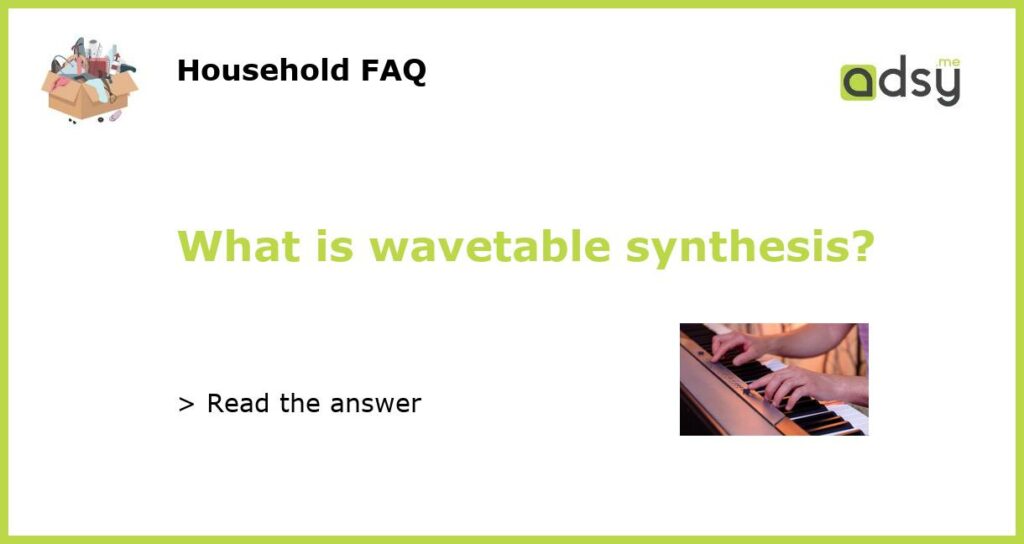Understanding Wavetable Synthesis: A Comprehensive Guide
If you’re interested in music production, you may have come across the term “wavetable synthesis” while exploring different types of sound synthesis. Wavetable synthesis involves using digital audio samples, or “wavetables,” to create complex and evolving sounds. In this guide, we’ll explore the basics of wavetable synthesis and how it works.
How Does Wavetable Synthesis Work?
Wavetable synthesis involves using pre-existing audio samples, or “wavetables,” to create complex and evolving sounds. These wavetables typically contain multiple cycles of a single sound wave, which can be manipulated and modulated in various ways. As the wavetable is played back, the sound transforms over time as different portions of the wavetable are accessed and blended together.
Modern wavetable synthesizers often allow for extensive modulation and manipulation of the sound, including blending multiple wavetables together, applying filters and effects, and controlling various parameters over time. This allows for a wide range of complex and evolving sounds that can be used in a variety of musical genres.
Advantages of Wavetable Synthesis
One of the main advantages of wavetable synthesis is its flexibility and versatility. Because it relies on pre-existing audio samples, it can be used to create a wide range of sounds and can be customized to fit a particular musical context. Additionally, the ability to modulate and manipulate the sound over time allows for a high degree of control and creativity in sound design.
Another advantage of wavetable synthesis is its efficiency. Because it relies on pre-existing audio samples, it requires less computational power than other types of synthesis, such as FM or additive synthesis. This makes it a popular option for software synthesizers and digital audio workstations.
Examples of Wavetable Synthesis in Action
Wavetable synthesis has been used extensively in electronic music, particularly in genres like trance, techno, and dubstep. Artists and producers often use wavetable synthesis to create complex and evolving sounds that are distinctive and memorable. Some popular synthesizers that use wavetable synthesis include Serum by Xfer Records, Massive by Native Instruments, and Pigments by Arturia.
Wavetable synthesis is a powerful and flexible form of sound synthesis that has become increasingly popular in the world of electronic music production. By using pre-existing audio samples, producers and artists can create complex and evolving sounds that can be customized to fit a particular musical context. Whether you’re an experienced producer or just starting out, exploring wavetable synthesis can lead to exciting new sounds and creative possibilities.






